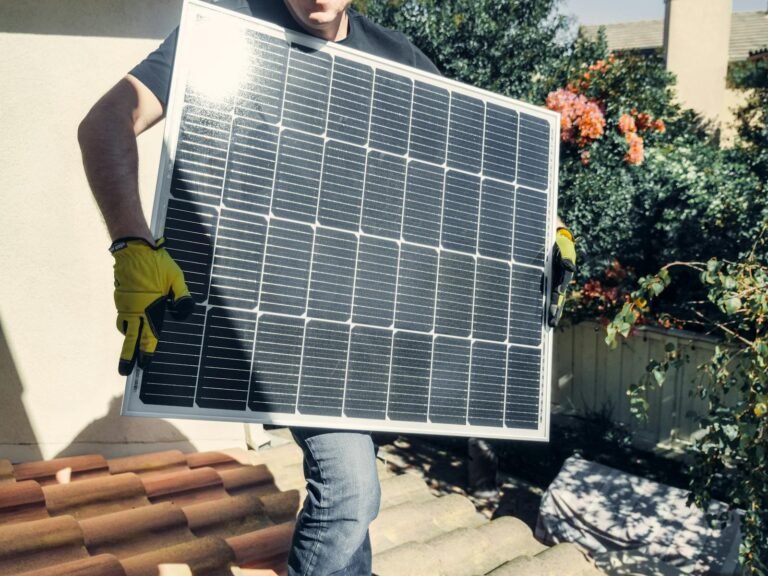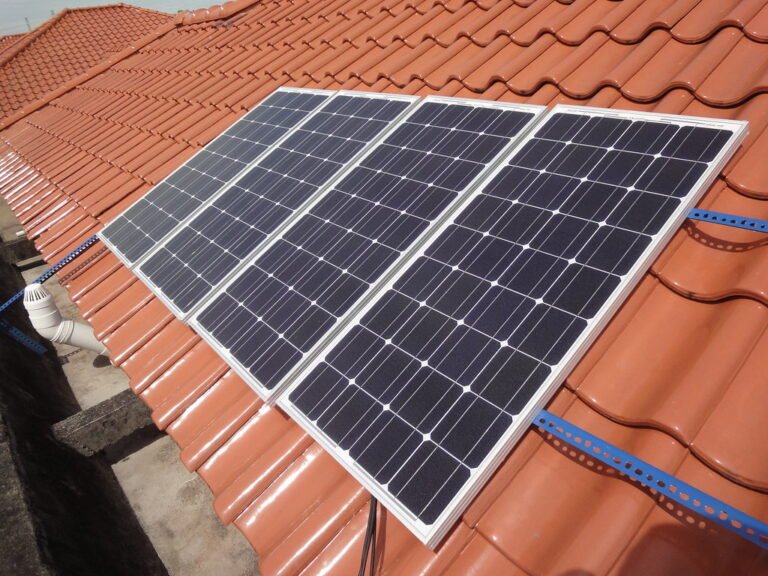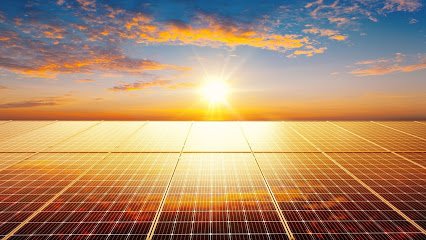Introduction to Solar Energy in Australia
Australia is one of the sunniest countries in the world, with an abundance of sunlight that creates an ideal environment for harnessing solar energy. This wealth of natural resources has made solar energy a significant player in Australia’s energy transition. The growing demand for renewable energy sources has prompted many households and businesses to consider the installation of solar panels, reflecting an increasing commitment to sustainable energy solutions.
The benefits of solar energy in Australia are manifold. One of the most immediate advantages is the potential reduction in electricity costs. By utilizing solar panels, users can generate their own electricity, thereby decreasing reliance on traditional power grids and lowering their overall utility bills. This financial relief can be particularly impactful in regions with high electricity prices, making solar energy an attractive alternative.
Moreover, adopting solar energy significantly contributes to a decreased carbon footprint. As environmental concerns rise globally, the transition to solar power is seen as a pivotal step towards combating climate change. Traditional energy sources, such as fossil fuels, exhibit detrimental effects on the environment, while solar energy presents a clean, renewable alternative that emits no greenhouse gases during operation. This cleaner source of energy plays a crucial role in Australia’s commitments to sustainability and carbon reduction initiatives.
In addition to environmental and financial benefits, the solar energy sector in Australia is also spurring job creation and economic growth. With the increasing installations of solar panels across the country, there is a growing need for skilled professionals in the renewable energy field, bolstering the economy while addressing the pressing issue of unemployment in certain sectors.
-Explore Solar Energy Companies Near You in Australia Here-
Taking into account these benefits, it is clear that solar energy has the potential to transform Australia’s energy landscape, making it a practical and forward-thinking solution for a sustainable future.
Understanding Solar Panel Technology
Solar energy in Australia is becoming increasingly popular, leading to a greater demand for various types of solar panels. The primary types available in the market include monocrystalline, polycrystalline, and thin-film panels, each offering different advantages and characteristics suited to various applications.
Monocrystalline solar panels are known for their high efficiency and longevity. Manufactured from a single crystal structure, they typically achieve efficiency levels between 15% to 22%. This type of panel performs well even in low-light conditions and occupies less space, making it ideal for residential rooftops where space might be limited. Additionally, monocrystalline panels have a lifespan of around 25 to 30 years, making them a long-term investment.
On the other hand, polycrystalline solar panels are made from multiple crystal structures. These panels are generally less efficient than their monocrystalline counterparts, with efficiency levels ranging from 13% to 16%. However, they often come at a lower price point, making them an attractive option for budget-conscious consumers. While they are slightly less efficient in low-light conditions, polycrystalline panels have a practical lifespan of a similar duration, around 25 years.
Thin-film solar panels represent another category in solar technology, distinguished by their lightweight and flexible nature. These panels are made by depositing a thin layer of photovoltaic material onto a substrate, resulting in lower efficiency rates of approximately 10% to 12%. Despite their lower efficiency, thin-film panels are advantageous for large installation areas, such as solar farms, where weight and flexibility play significant roles. Furthermore, they can perform better in high temperatures and partially shaded areas.
Understanding these different solar panel technologies is crucial for making informed decisions about solar energy in Australia. By evaluating the efficiency, lifespan, and application of each type, consumers can select the solar panels that best meet their needs and contribute to a sustainable energy future.
The Solar Market in Australia: Key Players
The solar market in Australia has been rapidly evolving, with numerous companies vying for their share in this burgeoning industry. As one of the leading adopters of solar energy in the world, Australia hosts a wide array of solar panel companies, both local and international. This landscape is characterized by competitive offerings that range from residential solar systems to large-scale commercial installations. Major players in the market include well-established names such as Canadian Solar, SunPower, and local favorites like Tindo Solar and J.A. Solar.
-Explore Solar Energy Companies Near You in Australia Here-
Canadian Solar, a global name in solar technology, has a significant presence in Australia, providing high-efficiency solar panels that are well-regarded for their durability and performance. Their market share in Australia is substantial, making them a key contributor to the national shift towards renewable energy solutions. Alternatively, Tindo Solar, an Australian company based in Adelaide, specializes in manufacturing solar panels right on home soil. This commitment to local production not only boosts the local economy but also ensures greater quality control and service for Australian customers.
SunPower is another notable player, renowned for its high-quality solar panels that promise excellent energy efficiency. Their reputation is built on innovation and cutting-edge technology, setting them apart in the competitive landscape of solar energy in Australia. Similarly, J.A. Solar has gained traction in Australia, offering a range of products that cater to different market segments, from residential to commercial applications. Each of these companies possesses unique strengths and market approaches, thus contributing to a diverse solar landscape that offers consumers various choices in solar panels and solar energy solutions across Australia.
How to Choose the Right Solar Company
Selecting the appropriate solar company is a critical step for those considering solar panels in Australia. With the increasing adoption of solar energy in Australia, various companies promise different levels of service, quality, and reliability. To navigate this landscape effectively, consumers should consider several essential factors.
Firstly, evaluating warranties offered by solar companies is crucial. A reputable solar panel company should provide warranties not only on the panels themselves but also on the inverter and installation services. A robust warranty indicates the company’s confidence in its products and their longevity, which is vital in ensuring your investment in solar energy is safeguarded.
Certification is another significant criterion. Look for companies that are certified by recognized authorities, such as the Clean Energy Council (CEC) in Australia. This certification ensures that the company adheres to specific quality and safety standards, which is particularly important when installing solar panels. Certified installers are more likely to provide effective and reliable services, which can lead to improved energy efficiency.
-Explore Solar Energy Companies Near You in Australia Here-
Customer reviews play a pivotal role in assessing potential solar providers. Investigating feedback from previous clients can offer insights into the company’s reliability, professionalism, and overall customer satisfaction. Websites like ProductReview.com.au can provide comprehensive evaluations of various solar companies, helping you make an informed decision.
Moreover, the installation services offered are another important consideration. Not all solar companies provide comprehensive installation support. Therefore, ensure that you choose a company that offers quality installation services, as poor installation can compromise the performance of solar panels. Lastly, explore the financial options available. Many reputable companies offer financing plans or incentives that can make the transition to solar energy more accessible.
In conclusion, by considering warranties, certifications, customer reviews, installation services, and financial options, consumers can make a well-rounded decision when selecting a solar company in Australia. This careful approach will enhance the overall experience of transitioning to solar energy in Australia.
Cost Analysis of Solar Panel Installation
One of the primary considerations for homeowners and businesses in Australia contemplating the shift to solar energy is the cost associated with solar panel installation. Understanding the fundamental influences on pricing can help potential customers make informed decisions. Generally, costs can vary significantly based on several factors including system size, type of solar panels, labor costs, and government incentives.
The size of the solar system is often the most significant driver of installation costs. For residential installations, smaller systems (around 3kW) can cost between AUD 3,000 and AUD 5,000, while larger systems (5kW or more) may range from AUD 5,000 to AUD 10,000 or higher. Solar panel efficiency and type also play a crucial role in determining price. Monocrystalline panels, for example, tend to be more efficient but often come at a premium compared to polycrystalline panels. Therefore, choosing the right type of solar panels to best suit one’s energy needs can impact both short-term costs and long-term savings.
Labor costs in Australia can vary based on location and the complexity of the installation process. Urban areas may experience higher labor costs due to demand, while remote locations might incur additional travel costs for installation teams. Additionally, the installation company selected can also influence the final price; reputable firms that provide warranties and high-quality service may charge more but also ensure a reliable installation that maximizes solar energy capture.
Fortunately, the Australian government offers various incentives and rebates that can significantly offset initial investment costs. Programs such as the Small-scale Renewable Energy Scheme (SRES) provide financial support, making solar energy more accessible to households and businesses. By understanding the comprehensive breakdown of these costs and available assistance, potential customers can make better decisions in their pursuit of solar panels in Australia.
-Explore Solar Energy Companies Near You in Australia Here-
Understanding Government Incentives and Subsidies
Transitioning to solar energy in Australia has become increasingly accessible, largely due to the variety of government incentives and subsidies available to homeowners and businesses. One of the most significant initiatives is the Small-scale Renewable Energy Scheme (SRES), which aims to encourage the uptake of solar panels in Australia. Under this scheme, eligible solar panel installations can receive Small-scale Technology Certificates (STCs), which can be sold or traded, providing substantial financial relief. This has been instrumental in reducing the upfront costs associated with solar energy adoption.
In addition to the SRES, various state-specific programs further bolster the incentives for solar energy in Australia. For instance, states like New South Wales and Victoria have implemented their own solar rebate programs. These programs often provide additional rebates or grants to residential solar installations, enhancing the overall financial benefits. Each state has its distinct eligibility criteria and application processes, making it essential for consumers to research the specific offerings in their region.
Moreover, tax incentives and feed-in tariffs are also part of the landscape of solar energy in Australia. By offering financial returns for the excess energy generated by solar panels and fed back into the grid, these programs can improve the payback period for installations. Utilities or government entities will often credit homeowners for the surplus energy, thereby reducing electricity bills and further incentivizing the switch to renewable energy.
These government initiatives are designed not only to alleviate initial investment concerns but also to encourage long-term sustainability in energy practices throughout Australia. As consumers become more informed about these benefits, the shift toward solar panels in Australia is likely to gain momentum, paving the way for a greener future. In conclusion, understanding the available incentives can significantly impact both the decision-making process and the financial feasibility of investing in solar energy technology.
Installation Process and What to Expect
The installation process of solar panels in Australia typically consists of several critical steps designed to ensure a seamless transition to solar energy. Initially, homeowners will engage in an initial consultation with a solar energy provider, which serves to discuss their energy needs, budget, and the benefits of solar panels. During this phase, it’s essential to evaluate different options and identify the best solar panel systems suitable for specific requirements.
Following the consultation, a site assessment is conducted by qualified technicians. This assessment includes evaluating the property’s roof space, angle, shading factors, and electrical systems. This thorough examination helps in designing a custom solar energy solution tailored to the home, which can optimize solar panel performance and energy generation. Homeowners should expect this stage to take a few days, as it often includes obtaining the necessary permits from local authorities.
-Explore Solar Energy Companies Near You in Australia Here-
Once the design is finalized and permits acquired, the installation phase begins. Typically, this process can take one to three days, depending on the system’s size and complexity. Certified installers will mount the solar panels on the roof, connect them to the inverter, and set up the electrical systems to ensure everything operates efficiently. Homeowners may experience some disruptions during this time, mainly due to the installation noise and the presence of workers, but most disruptions are minimal.
After the physical installation, a final inspection is performed to ensure the system complies with local regulations. Once it passes inspection, the solar panels in Australia can be connected to the grid, allowing homeowners to start utilizing solar energy. Overall, understanding these steps provides clarity and helps set realistic expectations for homeowners embarking on their journey to harness solar energy in their homes.
Maintenance and Longevity of Solar Panels
The efficient operation of solar panels relies heavily on regular maintenance and care. Homeowners must understand that solar energy systems require periodic cleaning and inspections to maintain their efficiency. Dust, bird droppings, and other debris can accumulate on the panel surfaces, potentially diminishing their energy output. Cleaning solar panels, ideally with soft water and a gentle approach, is advisable at least once or twice a year, depending on the local environment. In regions of Australia prone to significant dust or pollution, more frequent cleaning may be necessary.
In addition to cleaning, regular inspections are crucial to ensure the solar panels are functioning optimally. These inspections can help identify any physical damages, such as cracking in the panels, or issues with inverters and wiring. Homeowners are encouraged to engage professional services for annual checks to enhance the lifespan and functionality of their solar energy systems. Such routine monitoring can proactively address minor issues before they escalate, thus safeguarding the investment.
Speaking of longevity, solar panels manufactured today are designed with durability in mind. Most solar panels available in Australia have an average lifespan of 25 years, with many manufacturers providing warranties that guarantee performance and efficiency for similar durations. The warranties typically cover substantial energy production guarantees, ensuring homeowners can confidently rely on their solar energy systems for decades.
Furthermore, advances in technology and materials have led to the development of more resilient panels that can withstand harsh weather conditions. As a result, investing in high-quality solar panels can yield significant financial and environmental benefits over their lifespan. In conclusion, with the right maintenance practices and an understanding of their longevity, homeowners can ensure that their solar panels will remain a valuable asset within the broader context of solar energy in Australia.
Future Trends in Solar Energy in Australia
The solar energy sector in Australia is poised for substantial transformation, driven by continuous advancements in technology and changing regulatory frameworks. One of the most significant trends is the development of solar storage systems. As more households and businesses install solar panels, the demand for effective energy storage solutions has surged. These systems enable users to store excess energy generated during sunny days for later use, thus maximizing the benefits of solar energy. This trend is crucial for promoting energy self-sufficiency and minimizing dependency on the grid.
Another noteworthy trend is the integration of smart grid technologies. These innovations facilitate improved energy management by providing real-time data on energy consumption and generation. Such capabilities empower users to optimize their energy use, leading to reduced costs and increased efficiency in how solar energy is harnessed. Smart grids can also enhance grid reliability by allowing for better integration of renewable energy sources, including solar, into the existing infrastructure.
Additionally, evolving energy policies at both state and federal levels are shaping the future of solar panels in Australia. Initiatives that support the deployment of solar energy, such as feed-in tariffs and renewable energy certificates, are becoming increasingly favorable. These policies incentivize consumers to adopt solar systems and further encourage investments in solar technology. In this context, the rise of community solar projects is also noteworthy. Such initiatives allow local residents to collectively invest in and benefit from solar energy, increasing accessibility for those who may not have the option to install panels on their properties.
-Explore Solar Energy Companies Near You in Australia Here-
In conclusion, the future of solar energy in Australia appears promising, marked by innovations in solar storage, smart grid technologies, and supportive energy policies. As these trends continue to evolve, they will play a pivotal role in shaping Australia’s energy landscape and promoting widespread adoption of solar energy solutions.



